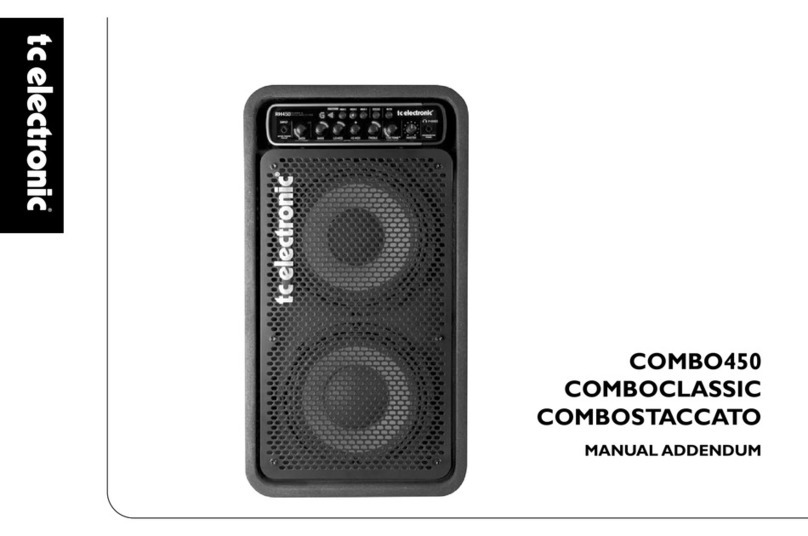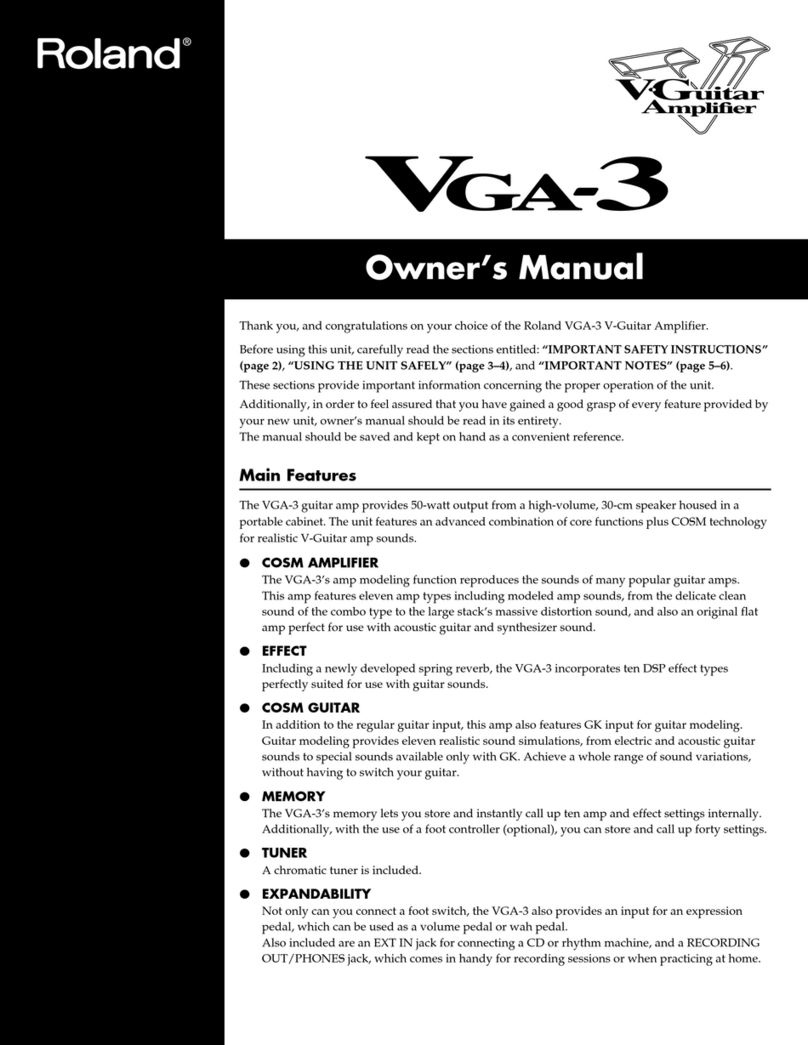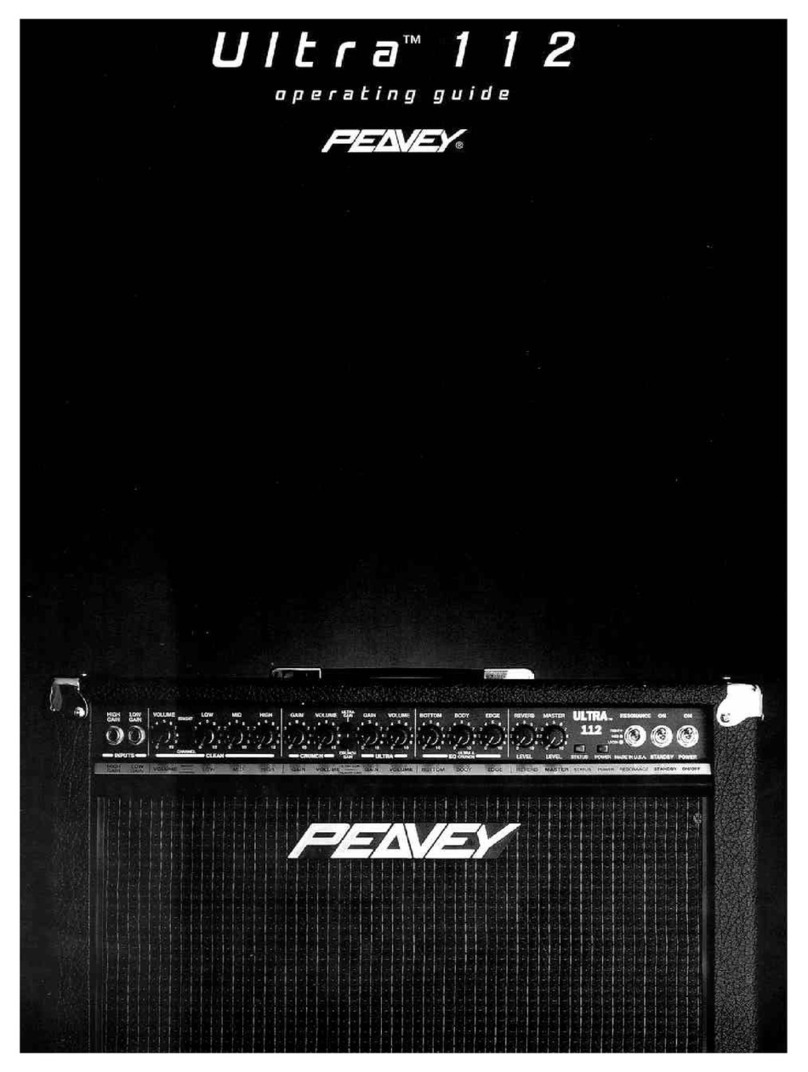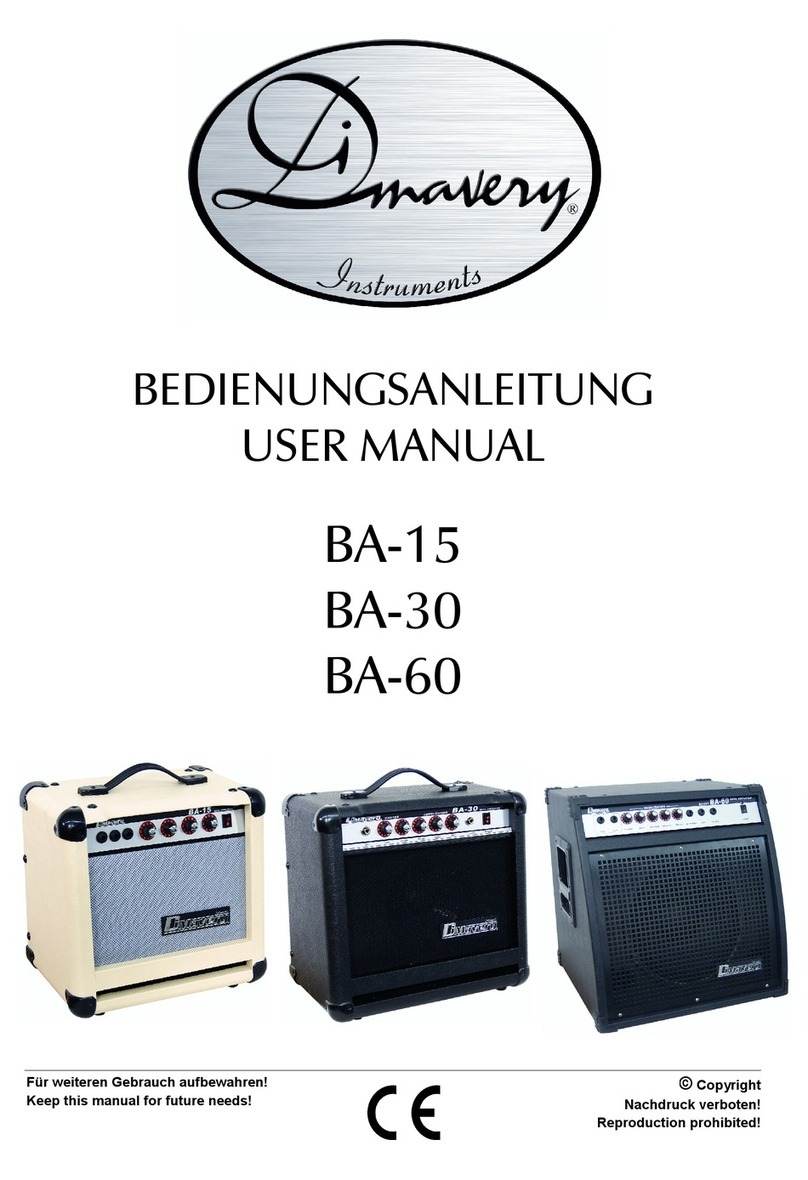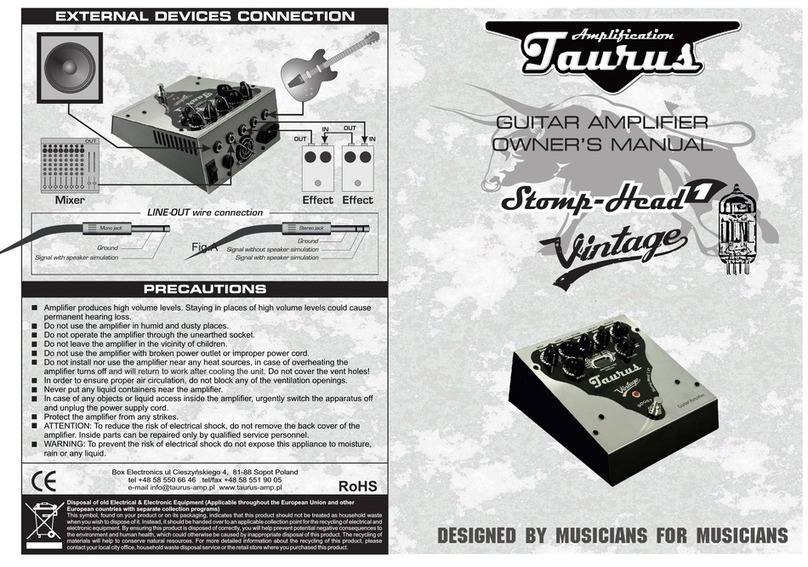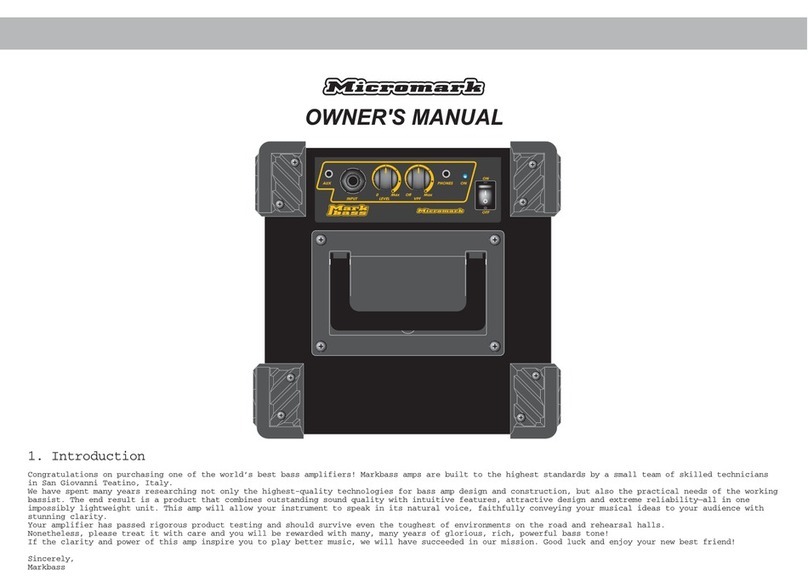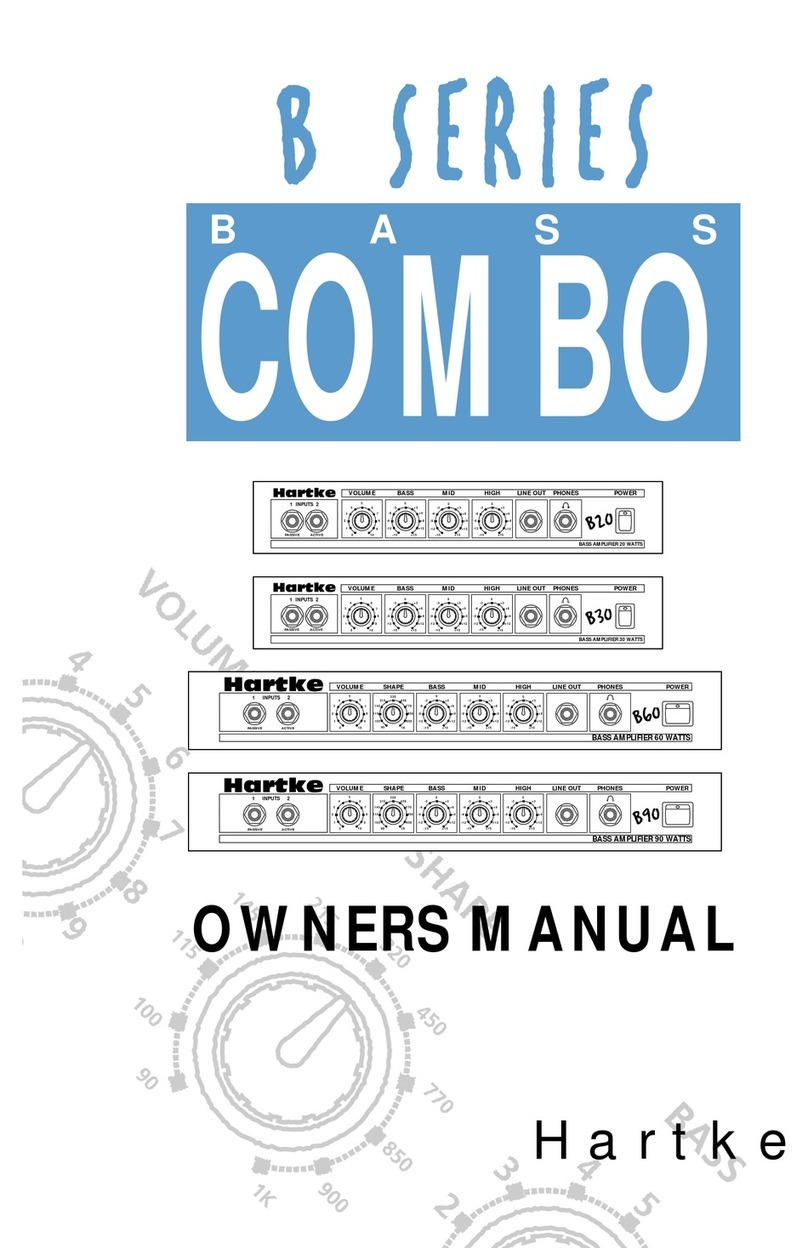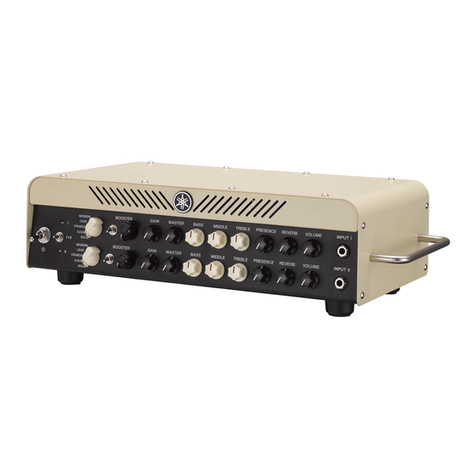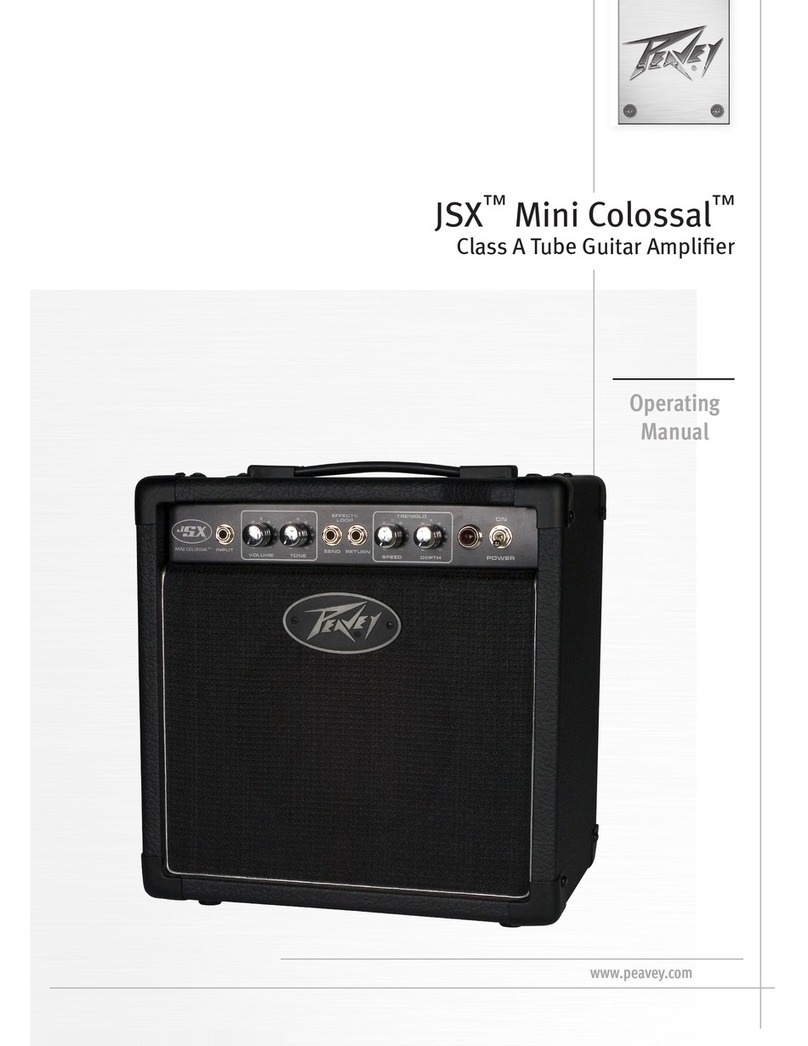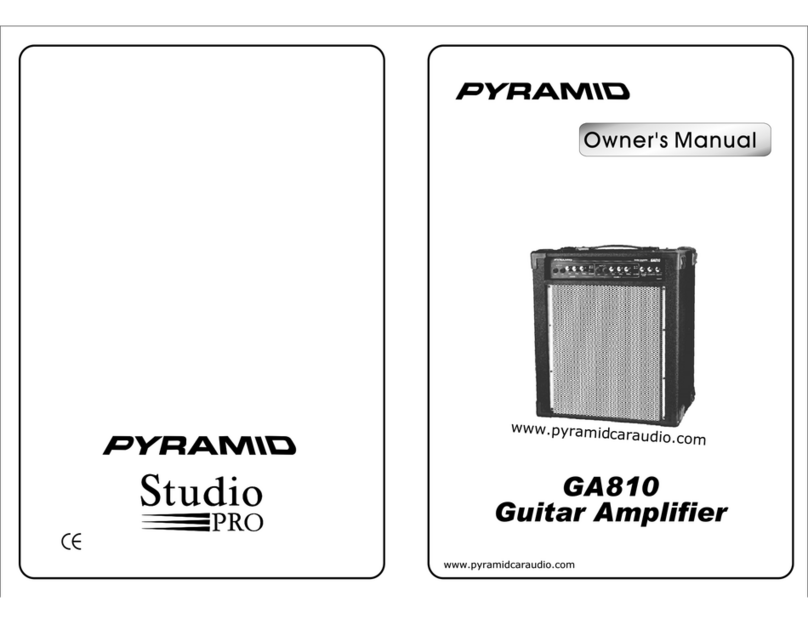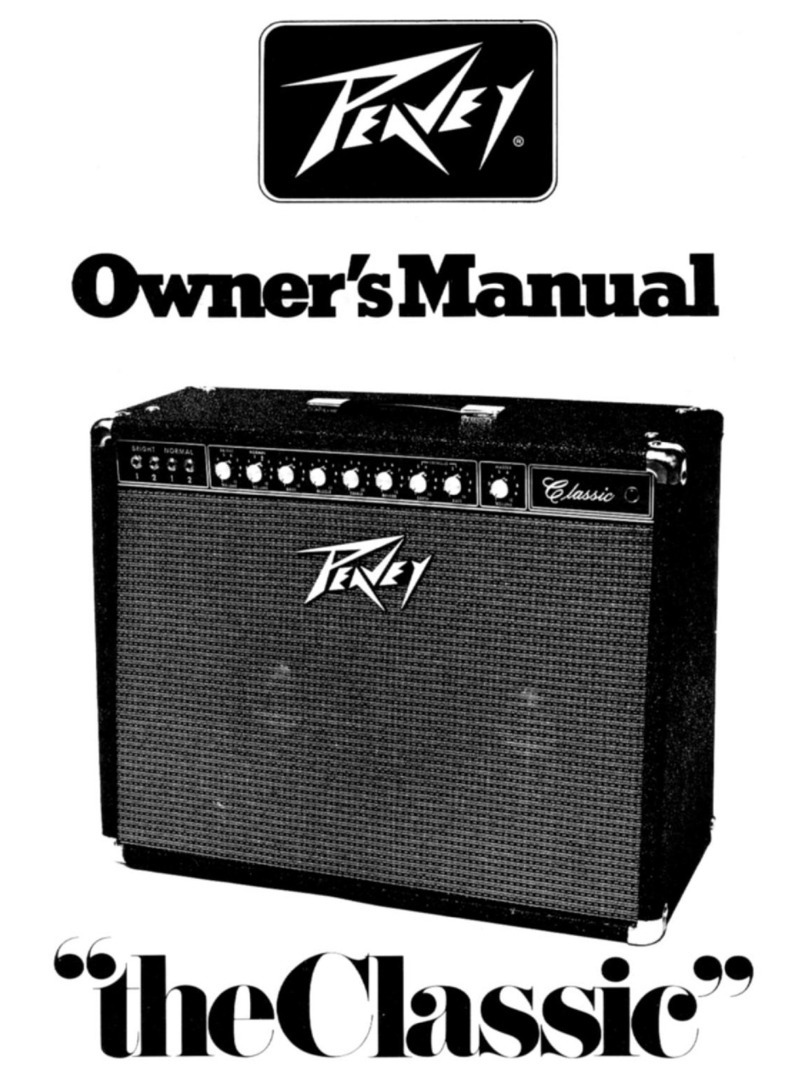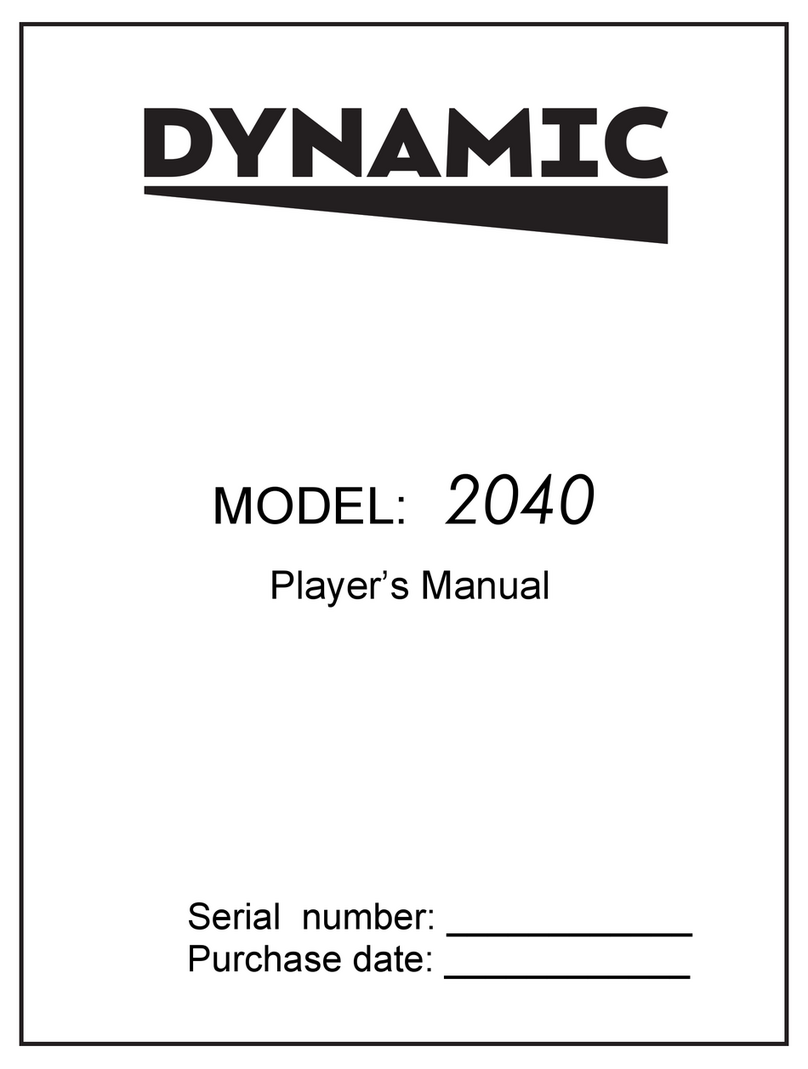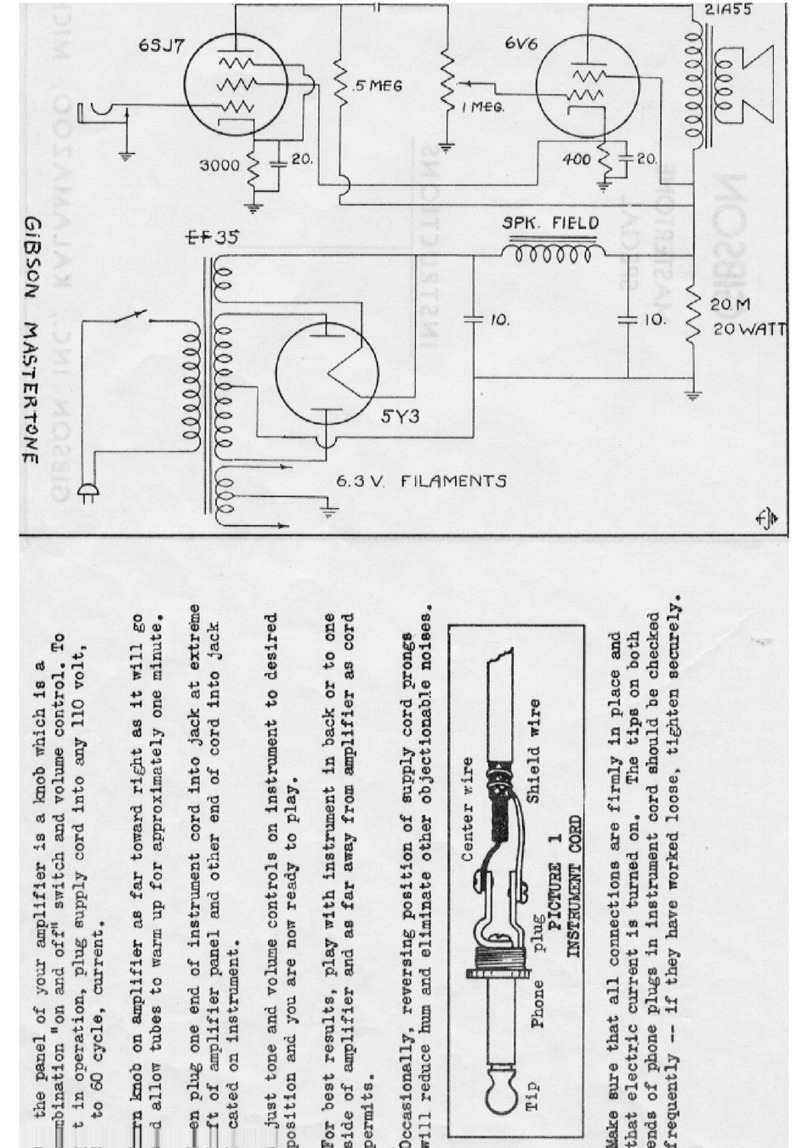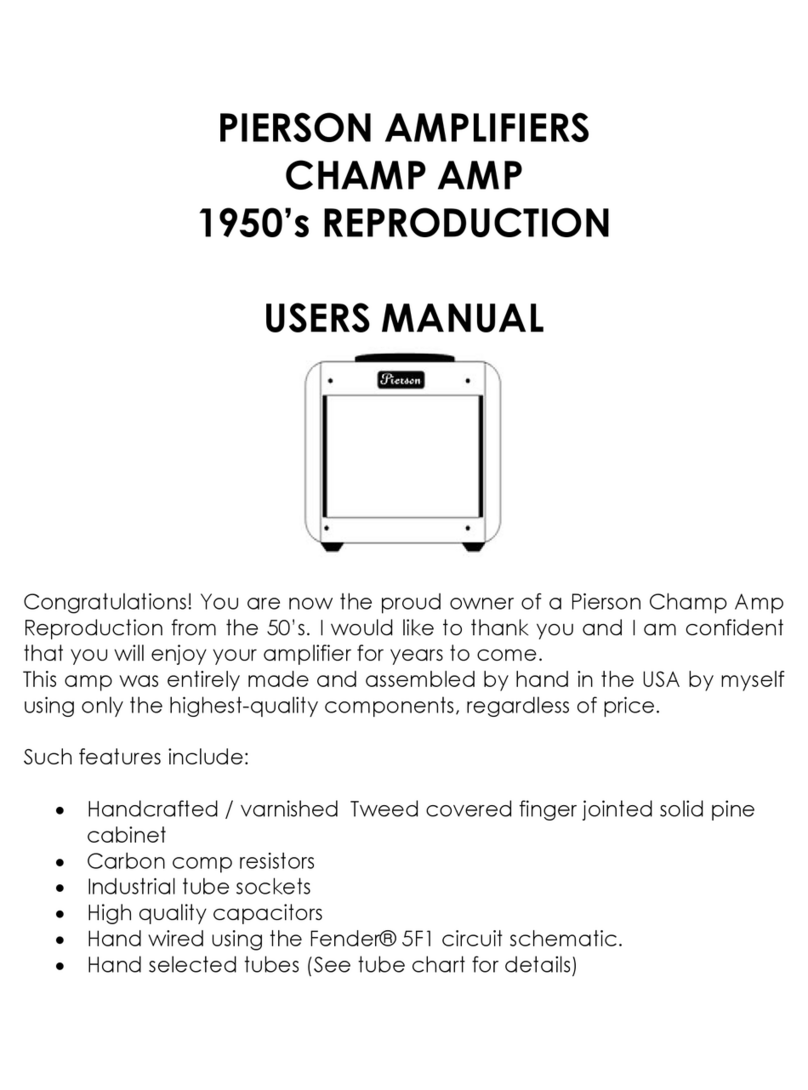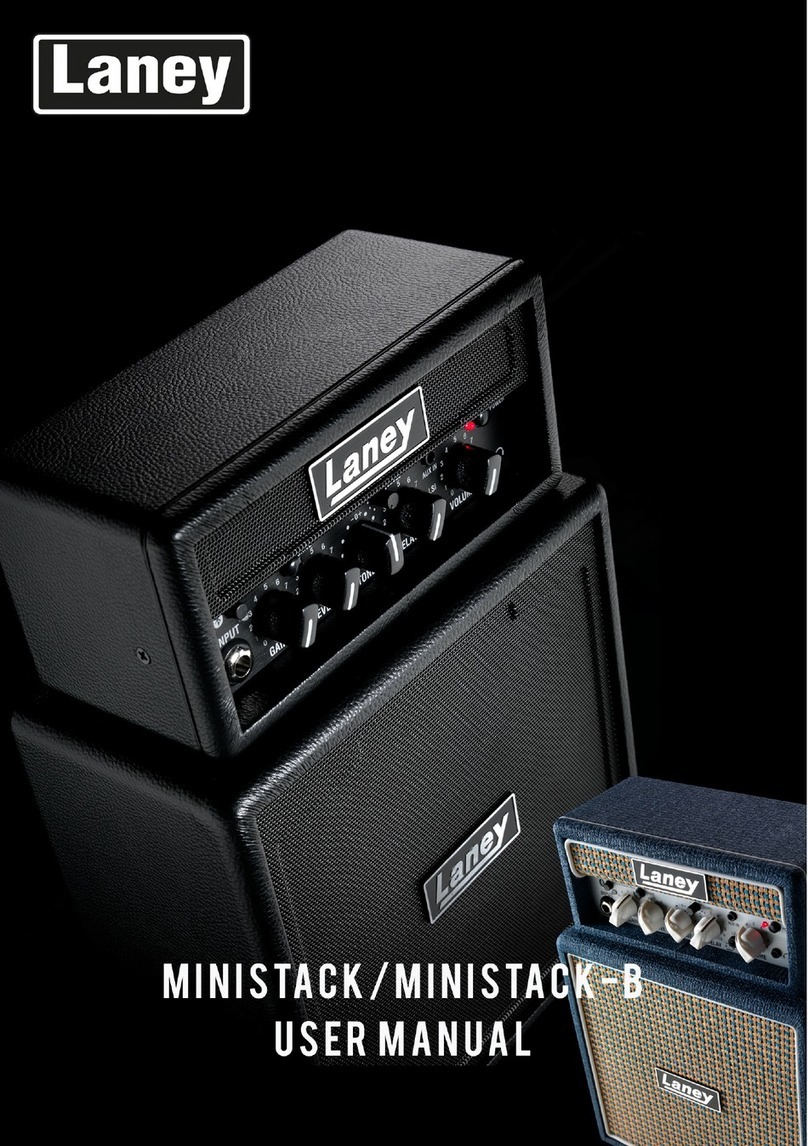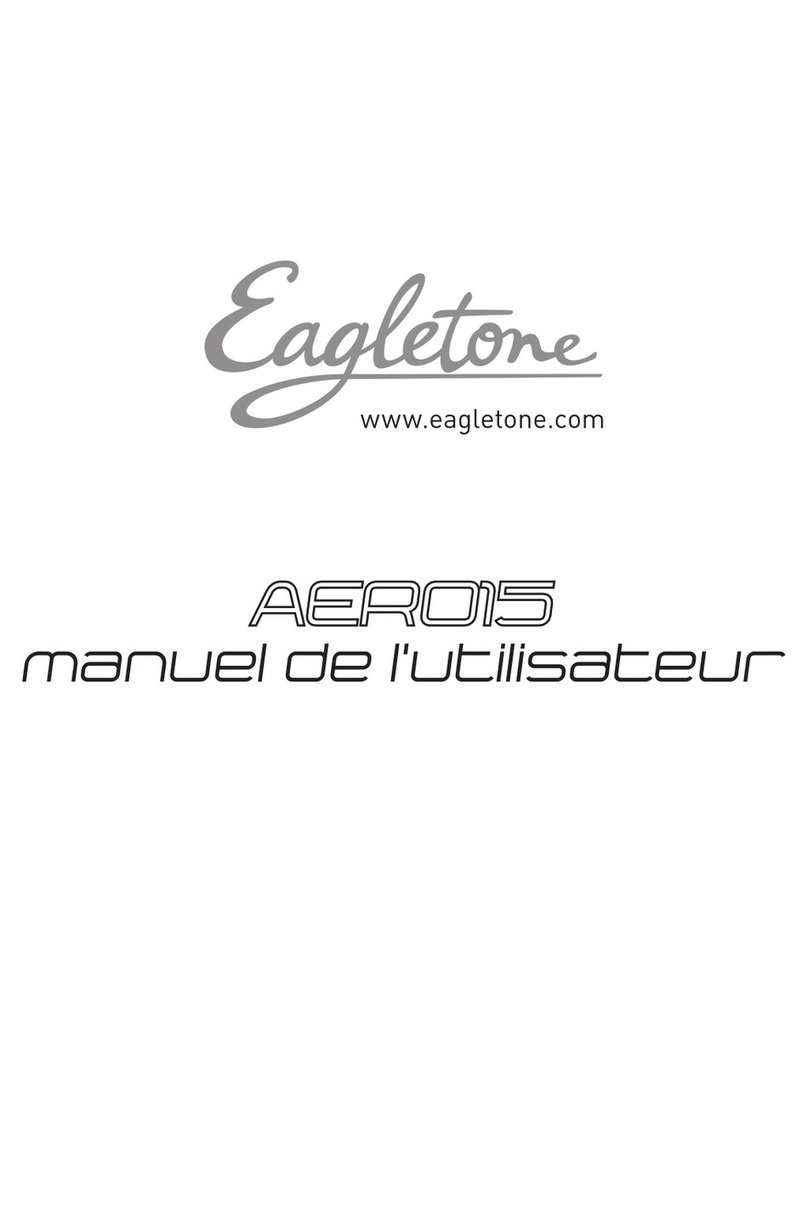Dusty Strings P10 User manual

1
B
E
D
I
J
K
A
C
F
G
H
Dusty Harp Pickup
for lever harps
qP10
for 24–30 string harps
q P20
for 32–40 stringharps
Installation Kit Contents and Diagram of Pickup
Pickup ElementA.
GrommetB.
Pickup HarnessC.
JackD.
Pickup Locating TemplateE.
Short Clips (P10 - 3, P20 - 4)F.
Tall Clips (P20 – 3)G.
Super GlueH.
½I. "Wrench
Jack-Tightening PinJ.
Pressure Stick/RulerK.
Lead WiresL.
Tools Required:
Awl•
Pencil•
Damp Cloth•
Masking Tape•
Optional:
Drill•
½” Brad Point Drill Bit•
(available from Dusty Strings)
Read is Before You Start!
ank you for choosing the Dusty Harp Pickup! While we developed the pickups and instructions specicially for Dusty
Strings harps, they have been successfully installed in numerous other makes and models with great success. Before you
begin, please read the instructions all the way through and pay special attention to the principles outlined below. is
will ensure a smooth installation process and optimal pickup performance, and will be especially helpful if installing the
pickup in a non-Dusty harp, where some of our more specic placement instructions may not apply.
Anything that is not securely attached can create a buzz, and any hard surface that is lightly touching another hard•
surface can cause a rattle.
Make sure the harness clips are not touching any part of the harp except where they are stuck on. Don’t put them•
close enough to buzz against the soundboard or braces. Don’t attach them to the soundboard if at all possible.
Make sure the lead wires are not resting on the soundboard.•
Regardless of how you install the jack, make sure all the internal and external nuts are snug, and make sure the jack is•
either securely attached to the harp or at the very least cushioned so it can’t buzz against the harp body.
Clean the surface of the harp at every adhesive attachment point, even if it doesn’t look dirty. A little bit of dust can•
interfere with the adhesive bond, resulting in loose components later on.
While we recommend testing pickup placement with double-stick tape on non-Dusty harps, it’s not a great long-•
term solution. Tape can come loose, and also weakens the signal, resulting in less-than-optimal tone and volume.
L

2
Installation Instructions
Step 1: Prepare the Harp
Lay your harp so the soundboard is parallel to the oor, with the sound-1.
holes facing up (see gure 1). It is important to get the soundboard as level
as you can. Prop your harp up securely, with a carpet or other padded
surface under the pillar and the base.
Use a slightly damp rag to wipe any dust or debris o of the inside of the2.
soundboard and the soundboard lining along the le side of the harp.
is will help to ensure the pickup elements and harness clips adhere well.
For Ravenna models with a drop-down leg installed, fully extend the leg3.
to get it out of the way.
Step 2: Drill Jack Hole
Find the center of the jack hole for your harp in the table below.1.
Ravenna 26 & Ravenna 34 Le Quarter Stave, 1½"up from base and centered on the
panel le to right 1½"
FH26 & Allegro 26 Center of back, 1⅛"below bottom sound hole 1⅛"
Crescendo 34, FH34,
Crescendo 32 & FH32 Center of back, 4"below bottom sound hole
4"
FH36S, FH36H & FH36B Center of back, 5"below bottom sound hole
5"
Using an awl, mark the position of the center of the hole on the back of the harp.2.
Place a paper towel inside the harp under the hole location to collect dust and wood chips from drilling.3.
Caution: When drilling, use gentle pressure to avoid chipping out the back of the hole and
to prevent the drill om plunging through and damaging the soundboard.
Carefully drill a hole with a ½4. "brad-point drill bit (see gure 3). Be sure to keep the
drill bit perpendicular to the surface of the harp.
Aer drilling, make sure the inside edge of the hole is free of splinters.5.
If you don’t want to drill a hole in your harp, the Dusty Pickup Jack Clamp may be used as a secure and removable alter-
native. See more at www.dustystrings.com.
If you have a Ravenna harp, it may have a pre-drilled hole, which would be on the le quarter stave on the back of the
harp, covered by a plastic cap. If you have a pre-drilled hole, you can skip the drilling step.
Brad-point
drill bit
Standard
drill bit
Figure 3 – Drill bits
Note: Using a brad-point drill bit is important. is type of bit centers the hole and
holds the bit in place, helping to prevent damage caused by the drill bit sliding on the
surface of the harp. It can also help to ensure that the hole doesn’t get “wowed out” as
you drill. If needed, ½"brad-point bits are available from Dusty Strings.
Figure 1 – Prop up the harp

3
Step 3: Mark Pickup Element Locations
Find the paper pickup locating template. Poke an awl or a nail1.
through any circles that are labeled for your harp model.
Fold the template on the dotted line near its pointed end.2.
Tape the fold at.
Slide the template into the harp through the bottom sound-3.
hole, folded end rst.
Place the template on the soundboard with the edge against4.
the soundboard lining on the le side of the harp. e lining
is the strip of wood that covers the joint between the sound-
board and the side of the harp.Position the template so the
folded end points directly at the highest F (blue) string (see
gure 4). Tape the template in place. (If you have a non-Dusty
harp, see the sidebar on the right for more info.)
Mark a pencil dot directly on the soundboard through each5.
of the holes you made in the template, or at the ends of the
arrows if the circles don’t apply to your harp model.
Step 4: Mark Harness Clip Locations
Note: e P10 pickup uses three short harness clips. e P20
usually uses four short clips, but there are a few exceptions. When
installing a P20 in a Dusty Strings FH36S, only three short clips
are used. When installing the P20 in a non-Dusty harp with in-
ternal body ribs, taller harness clips may be required to clear the
ribs. ree tall clips are included in the P20 kit for this reason.
F1. or all Dusty Strings models except FH36S: Mark an ‘X’
on the soundboard lining approximately 1” toward the base
of the harp from each element location (see gure 4). is
location is approximate, and can be adjusted as needed.
For FH36S only:2. You will install three clips on the small
nger braces running perpendicular to the soundboard lining
(see gure 5).
For non-Dusty harps:3. You will need to use your judgement
to place the clips in locations that make sense for that particu-
lar harp. Just make sure the main harness can stay relatively
straight, the clips are not stuck to the soundboard or positioned
close enough to buzz against the soundboard or other parts of
the harp, and you’re not placing the harness so far from the ele-
ments that it creates stress on the lead wires.
Testing Pickup Placement in a Non-Dusty Harp
Before gluing the pickup elements to the sound-
board of a non-Dusty Strings harp, we advise using
double-stick tape to temporarily place the elements
on the outside of the soundboard, using the tem-
plate so you can nd the same locations when you
permanently install the pickup inside. en, plug
into your amplier and see how it sounds. You can
tweak the sound a bit by adjusting the positions
of the elements. Generally, moving the pickups
toward the middle of the soundboard will increase
the signal strength (loudness) and moving them
toward the side of the harp will decrease the signal
strength. Find the balance that is best for your
harp. Be aware that the overall signal strength will
be diminished by using the double-stick tape. ere
will be a much stronger signal once the elements
are glued in and the glue has cured.
For some lever harps like the Lyon and Healy
Ogden, which has the more robust bracing and
higher-tension strings of a pedal harp, you may get
better results with the pickup elements positioned
further toward the center of the soundboard. As
a starting point, we recommend placing the paper
template against the string rib instead of against the
lining, and making your pencil dots on the outside
of the template (see gure 4A).
String Rib
Pencil dot here
Figure 4A – Alternate template placement for L&H Ogden
Figure 5 – FH36S Clip Location
Soundboard
lining Harness clip
Finger brace
Figure 4 – Marking Template pointing at high F
1"
Soundboard
lining

4
Carefully remove the template from inside the harp.4.
You should now have 3 or 4 (depending on model) clearly visible pencil dots on the soundboard and corresponding5.
‘X’ marks for the harness clips on the lining.
Step 5: Attach Harness Clips
Note: Please read this section completely before attaching clips.
Place a paperclip or thin coin on the soundboard under the1.
lowest ‘X’ mark on the soundboard lining to act as a spacer.
is is to prevent the harness clip from touching the sound-
board and causing unwanted vibration.
Remove the paper backing from the self-adhesive patch on2.
one of the harness clips.
Orient the angled corners away from the soundboard and use3.
the spacer to position the bottom edge of the clip up o the
soundboard (see gure 6).
Firmly press the clip into place over the ‘X’ on the soundboard4.
lining, keeping it as square to the soundboard as possible. e clip may be wider than the lining, and this is okay.
Remove the spacer.5.
Repeat for the remaining clips.6.
Step 6: Attach Pickup Harness
Slide the pickup harness up through the bottom sound hole, being careful to avoid dragging or bumping the jack1.
against the harp.
Orient the harness so the pickup element lead wires point toward the string rib, away from the side of the harp2. (see
gure 7 on next page).
Slide the rubber grommets on the harness so that they align with the clips while allowing the pickup elements to line3.
up with the marks on the soundboard.
Press the rubber grommets into the clips. e groove in each grommet should snap into place in the arms of the clip.4.
It is not necessary to twist the clips’ “ears” together.
If your particular installation leaves you with an extra grommet (this will be the case with the FH36S), you can5.
either leave it alone, or you can very carefully cut it o with a sharp blade, diagonal cutter, or scissors.
Figure 6 – Spacers
Soundboard Soundboard
lining
Spacers
(See next page)

5
Step 7: Glue Pickup Elements in Place
Caution: Once the elements are glued on, they are very dif-
cult to remoe without damaging the pickup or the sound-
board. Be sure to practice using the tools as described in the
sidebar at right.
Starting with the top pickup element, follow this1.
sequence:
Apply the super glue to the pencil dot.a.
Keeping the pickup element parallel to the sound-b.
board (to ensure an even thickness of glue) press the
pickup down rmly and quickly onto the super glue
and hold in place with the provided pressure stick.
Important:c. Hold rmly for two minutes, without
moving the pickup element. To ensure a complete
glue bond, we recommend using a timer to make
sure you hold for a full two minutes.
e lead wire should naturally curve away from thed.
soundboard (see gure 7). If necessary, adjust the
pickup harness in the clips to ensure that the lead
wires won’t touch the soundboard and cause unwant-
ed vibration.
For all Dusty Strings harp models except thee.
FH36S, the pickup element lead wire will bend up-
ward, toward the top of the harp (see gure 7).
For the FH36S, because the harness clips attach tof.
the nger braces instead of the soundboard lining,
the pickup element lead wires will bend downward,
toward the bottom of the harp (see gure 8).
Proceed with the next pickup, and so on, until all are2.
done.
Dusty Strings • 3450 16th Ave. W., Seattle, WA 98119 • Toll Free 866-634-1656 • www.dustystrings.com
Practice manipulating and placing the element
Hold a pickup element by its lead wire, and guide it1.
into position in the air over the pencil dot, parallel
to the soundboard surface. It’s best to drop the ele-
ment directly onto the glue dot rather than sliding
it along the soundboard. Sliding can be messy and
may interfere with the strength of the glue bond.
Position the element shiny side down, and practice2.
using the pressure stick to press the pickup element
down onto the soundboard.
A useful trick, especially when it’s dicult to get3.
both hands inside the harp, is to use double-stick
tape or poster putty to attach the element to the
pressure stick. en you can use the stick to position
the element instead of your hands. Once the glue
has cured for two minutes, you’ll be able to remove
the stick without pulling the element back up again.
Work with this until you have a feel for4.
manipulating and positioning the elements.
Practice controlling glue
Find the super glue practice dots located on the1.
Pickup Locating Template.
Touch the tip of the tube to the paper and squeeze2.
out just enough glue to ll the circle. is should be
less than a drop. is is enough glue to bond the en-
tire surface of the pickup to the soundboard without
excess that will run and soak into the soundboard.
Try to be as neat as possible.
When you have a feel for the right amount of glue,3.
begin gluing the pickups in place.
Pickup element lead wire
Top of harp
Figure 7 – Pickup Element Installation
String rib String rib
Finger brace
Pickup element
Figure 8 – FH36S Pickup Element and Lead Wire
Top of harp

6
Step 8: Install the Jack
Note: If you have also purchased the Dusty Harp Jack Clamp, follow the included Jack Clamp instructions instead for install-
ing the jack and tting the clamp on your harp.
Remove the tip nut, the retaining nut, and the outer washer from the jack1. (see gure 9a). Leave the lock washer, in-
ner washer, and inner nut in place.
Reach inside the harp and carefully push the end of the jack up through the hole you drilled in the back of the harp.2.
Adjust the inner nut so the step to the wider threads sits about ¹⁄₁₆" (1.5mm) below the outer surface of the harp
body (see gure 9b).
Put the outer washer on the jack followed by the retaining nut3. (see gure 9c). Snug down the retaining nut nger-
tight. e jack should be rmly held in place. If the jack is loose in the hole, loosen the retaining nut and adjust the
inner nut so that the outer washer and retaining nut can fully seat against the surface of the harp.
Place the ½4. "wrench on the retaining nut. Insert the jack-tightening pin through the cross-drilled hole in the threads
of the jack. Hold the jack in position with the pin and use the ½"wrench to rmly tighten the retaining nut (see
gure 9d).
Screw on the tip nut nger-tight. If correctly installed, the end of the threaded portion of the jack should be slightly5.
visible in the chamfer at the end of the tip nut (see gure 9e). Your cable plug needs to be able to make a rm connec-
tion with the jack; it should snap distinctly into place when inserted. If the threaded portion of the jack is too far
inside the tip nut, the cable can be stopped by the tip nut before it makes a good connection with the jack. If this is
the case, you will need to remove the tip nut, loosen the retaining nut, adjust the position of the inner nut so that the
end of the jack barrel is very slightly farther out, and retighten the retaining nut.
Step 9: Test
Plug the pickup system into an amplier and lightly tap the backside of the soundboard near each pickup element to
make sure each is giving a signal. You can play your harp and use the pickup safely, but avoid moving or jostling your
harp for 24 hours. e tone and signal strength will improve over the next day as the super glue cures to full hardness.
Congratulations! Now the installation process is complete. Please call us with any questions.
Dusty Strings • 3450 16th Ave. W., Seattle, WA 98119 • Toll Free 866-634-1656 • www.dustystrings.com
Figure 9 – Jack components and installation
Figure 9b – Jack installation
Wider
threads
Step
Surface
of harp
Figure 9c – Jack installation
Outer washer
Inner washer
Retaining nut
Inner nut
Lock washer
Figure 9a – Jack components
Tip nut
Retaining nut Outer washer
Inner nut
Inner washer Lock washer
Figure 9d – Tighten the jack Figure 9e – Optimal alignment
Tip nut
End of jack Chamfer
rev. 5/29/18
This manual suits for next models
1
Table of contents

